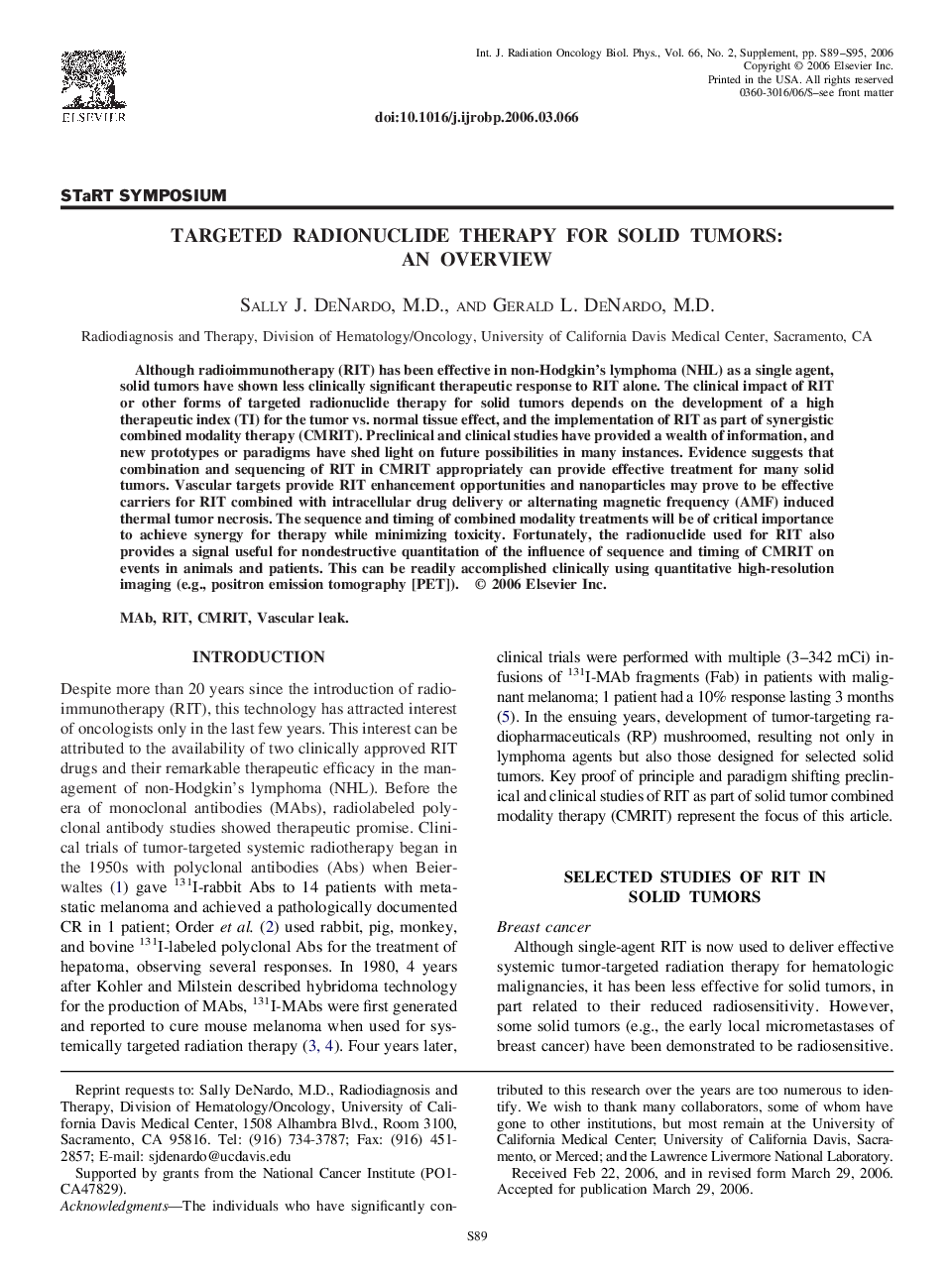| Article ID | Journal | Published Year | Pages | File Type |
|---|---|---|---|---|
| 8244842 | International Journal of Radiation Oncology*Biology*Physics | 2006 | 7 Pages |
Abstract
Although radioimmunotherapy (RIT) has been effective in non-Hodgkin's lymphoma (NHL) as a single agent, solid tumors have shown less clinically significant therapeutic response to RIT alone. The clinical impact of RIT or other forms of targeted radionuclide therapy for solid tumors depends on the development of a high therapeutic index (TI) for the tumor vs. normal tissue effect, and the implementation of RIT as part of synergistic combined modality therapy (CMRIT). Preclinical and clinical studies have provided a wealth of information, and new prototypes or paradigms have shed light on future possibilities in many instances. Evidence suggests that combination and sequencing of RIT in CMRIT appropriately can provide effective treatment for many solid tumors. Vascular targets provide RIT enhancement opportunities and nanoparticles may prove to be effective carriers for RIT combined with intracellular drug delivery or alternating magnetic frequency (AMF) induced thermal tumor necrosis. The sequence and timing of combined modality treatments will be of critical importance to achieve synergy for therapy while minimizing toxicity. Fortunately, the radionuclide used for RIT also provides a signal useful for nondestructive quantitation of the influence of sequence and timing of CMRIT on events in animals and patients. This can be readily accomplished clinically using quantitative high-resolution imaging (e.g., positron emission tomography [PET]).
Keywords
Related Topics
Physical Sciences and Engineering
Physics and Astronomy
Radiation
Authors
Sally J. M.D., Gerald L. M.D.,
